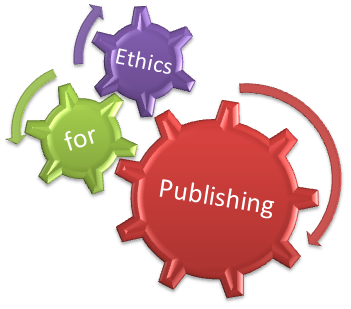Properties of Sustainable Concrete Utilization Foundry Sand
(*) Corresponding author
DOI: https://doi.org/10.15866/irece.v14i1.22070
Abstract
The reduction of natural sand used in concrete as fine aggregate due to widely concrete usage has led to search for another alternative to sand. The effect of using foundry sand waste to partially replaced sand by weight in concrete has been studied in this paper. Percentages (10%, 20%, 30%, and 40%) of waste foundry sand have been used and the results of workability, dry density, water absorption, compressive strength, split tensile and flexural strength with reference concrete mix that contain natural sand 100% have been compared. The chemical and the physical properties of foundry sand have been examined. Substitute waste foundry sand up to 30% has decreased workability and has increased the density. The 30% replacement has recorded the more increase in compressive and splitting strength of about 25.6% and 17.2% respectively for age 7 days, while 10.7% and 15.6% respectively at age 28 days. Waste foundry sand has been less effective in enhancing the flexural strength than compressive strength. The 40% replacement has showed poor results. The effect of superplasticizer has been studied on 40% waste foundry sand mix. Using superplasticizer 1% of cement weight has recorded increase in compressive and splitting strength of about 9.9% and 4.4% respectively for age 7 days, while 2.8% and 9% % respectively at age 28 days when compared to the reference mix.
Copyright © 2023 Praise Worthy Prize - All rights reserved.
Keywords
References
H. Hebhoub, H. Aoun, M. Belachia, H. Houari, and E. Ghorbel, Use of waste marble aggregates in concrete, Construction and Building Materials, Vol. 25, No. 3, pp. 1167-1171, 2011.
https://doi.org/10.1016/j.conbuildmat.2010.09.037
M. Vijayalakshmi, A. S. S. Sekar, and G. Ganesh Prabhu, Strength and durability properties of concrete made with granite industry waste, Construction and Building Materials, Vol. 46, pp. 1-7, 2013.
https://doi.org/10.1016/j.conbuildmat.2013.04.018
A. Arivumangai, T. Felixkala, Strength and durability properties of granite powder concrete, Journal of Civil Engineering Research, Vol. 4, No. 2A, pp.1-6, 2014.
https://doi.org/10.5923/c.jce.201401.01
Ameer Mohsen Hashim, V. C. AGARWAL, Experimental study on strength and durability of concrete with marble & granite powder, International Journal of Civil, Structural, Environmental and Infrastructural Engineering Research and Development (IJCSEIERD), Vol. 4, Issue 2, pp. 147-156, April 2014.
Mr. G. Raja, Mr. K. M. Ramalingam, Experimental study on partial replacement of fine aggregate by granite powder in concrete, International Journal for Innovative Research in Science and v Technology (IJIRST), 2 (12), pp. 202-209, 2016.
C. Chiemela, IE. Walter, IH. Ogedi, OC. Peter, and O. Mong, Comparing the compressive strengths of concrete made with river sand and quarry dust, International Journal of Recent Research and Applied Studies (IJRRAS), Vol. 22, Issue 2, pp. 31-38, February 2015.
H. O. Ozioko and E. E. Ohazurike, Effect of Fine Aggregate Types on the Compressive Strength of Concrete, Nigerian Journal of Engineering, Vol. 27, No. 2, pp. 55-59, August 2020.
K. Kavitha, V R Sankar Cheela, G. Raju, Utilization of Quartzite as Fine Aggregate in Concrete, e-Journal of Science & Technology (e-JST), January 2019.
T. U. Mohammed, Md. M. Hassan, Md. N. Rahman, Sh. M. Apurbo, Brick fine aggregate and ladle furnace slag as alternative to natural river sand, Fifth International Conference on Sustainable Construction Materials and Technologies, Kingston University London, UK, July 14 - 17, 2019.
https://doi.org/10.18552/2019/IDSCMT5077
G. K. Warati, M. M. Darwish, F. F. Feyessa, T. Ghebrab, Suitability of scoria as fine aggregate and its effect on the properties of concrete, Sustainability, Vol. 11, Issue 17, pp. 4647, August 2019.
https://doi.org/10.3390/su11174647
Mohammed, T., Nasser, I., Saeed, I., Influence of Expanded Clay Aggregate on Various Properties of Lightweight Concrete Tiles, (2021) International Review of Civil Engineering (IRECE), 12 (2), pp. 85-92.
https://doi.org/10.15866/irece.v12i2.18505
C. M. Antonio, P. V. Antonio, and A. F. A. Munhoz de, Concrete made with alternative fine aggregate: the reuse of porcelain electrical insulators, Materials Science Forum, ISSN: 1662-9752, Vol. 912, p.p. 185-190, January 2018.
https://doi.org/10.4028/www.scientific.net/MSF.912.185
M. Lokeshwari, N. Ostwal, P. Saxena. and P. Pranay, Utilization of waste plastic as partial replacement of fine and coarse aggregate in concrete blocks, International Research Journal of Engineering and Technology (IRJET), Vol.06, Issue 09, pp. 378- 382, September 2019.
H. Gupta, and A.K. Saxena, Steel slag as a partial replacement of fine aggregate in terms of high strength concrete, International Journal of Advance Research, Ideas and Innovations in Technology (IJARIIT), Vol. 3, Issue 6, pp. 215-220, 2017.
A. Sawant, A. Sharma, R. Rahate, N. Mayekar, M. D. Ghadge, Partial replacement of sand with sawdust in concrete, International Research journal of Engineering and Technology, Vol. 5, Issue 03, pp. 3098-3101. March 2018.
M. Miloudi, M. Merbouh and B. Glaoui, Use of Coal Waste as Fine Aggregate on Properties of Concrete On Hot Weather, International Journal of Civil Engineering and Technology (IJCIET), Vol. 8, Issue 11, pp. 959-966, November 2017.
https://doi.org/10.15866/irece.v8i4.12273
M. S. Islam, M. S. Ali, R. Parvin, Mechanical Properties of Concrete Made by Fine Aggregate Obtained from Dismantled Concrete, World Journal of Science and Engineering (WJSE), Vol. 3, Issue 1, pp. 71-88, June, 2018.
W. Ararsa, E, T. Quezon. A. Aboneh, Suitability of Ambo Sandstone Fine Aggregate as an Alternative River Sand Replacement in Normal Concrete Production, American Journal Civil Engineering Architecture, Vol. 6, Issue 4, pp. 140-146, 2018.
https://doi.org/10.12691/ajcea-6-4-2
T. U. Mohammed, Md. M. Hassan, Md. N. Rahman, Sh. M. Apurbo, Brick Fine Aggregate and Ladle Furnace Slag as Alternative to Natural River Sand, Fifth International Conference on Sustainable Construction Materials and Technologies, Kingston University London, UK, July 14 - 17, 2019.
https://doi.org/10.18552/2019/IDSCMT5077
G. K. Warati, M. M. Darwish, F. F. Feyessa, T. Ghebrab, Suitability of Scoria as Fine Aggregate and Its Effect on the Properties of Concrete, Sustainability, Vol. 11, Issue 17, pp. 4647, August 2019.
https://doi.org/10.3390/su11174647
Sakthieswaran Natarajan and Priyanka Murugesan, Synergistic effect of marble powder and green sand on the mechanical properties of metakaoline, cement concrete, Materials, Vol. 12, Issue 3, pp. 476, Feb; 2019.
https://doi.org/10.3390/ma12030476
M. J. Memon, A. A. Jhatial, Z. A. Rid, T. A. Rind, A.R. Sandhu, Marble powder as fine aggregate in concrete, Engineering, Technology & Applied Science Research, Vol. 9, Issue 3, p. 4105- 4107, 2019.
https://doi.org/10.48084/etasr.2698
Neslihan Doğan-Sağlamtimur, Waste Foundry Sand Usage for Building Material Production: A First Geopolymer Record in Material Reuse, Advances in Civil Engineering, Vol. 2018, Article ID 1927135, 10 pages, 2018.
https://doi.org/10.1155/2018/1927135
G. Yaylalı, New world, new trends, technologies and Turkish foundry sector, Metallurgy Journal, Vol. 173, pp. 22-40, 2015.
T. Kaya and C. Karakurt, Investigation of the engineering properties of implementation concrete paving stones, Duzce University Journal of Science and Technology, vol. 2, pp. 469-474, 2016.
Iraqi Specifications, No.5, Portland cement. Central organization for standardization and quality control, Iraq, 1984
Iraqi Specifications, No.45, for Aggregate of Natural Resources used for Concrete and Construction. Iraq, 1984.
(ACI 211.1-91), Standard practice for selecting proportions for normal, heavyweight, and mass concrete, American Concrete Institute. Committee 211, 1991. (Reapproved 2002).
ASTM C192/ C192M- 16a, Standard Practice for Making and Curing Concrete Test Specimens in the Laboratory, American Society for testing and Materials, 2016.
ASTM C 143 - 13, Standard Test Method for slump of Hydraulic Cement Concrete, American Society for testing and Materials, 2013.
ASTM C 642 - 13, Standard Test Method for Density, Absorption, and Voids in Hardened Concretes, American Society for testing and Material, 2013.
ASTM: C642, 2006. Density, Absorption, and Voids in Hardened Concrete. American Society for Testing and Material International.
ASTM C39-14a, Standard Test Method for Compressive Strength of Cylindrical Concrete Specimens. American Society for Testing and Materials. 2005.
ASTM C496/C496M: 2011, Standard Test Method for Splitting Tensile of Cylindrical Concrete Specimens. American Society for Testing and Materials, 2011.
ASTM C78-2003. Standard Test Method for Flexural Strength of Concrete Using Simple Beam with Third-Point Loading. Annual Book of ASTM Standard.
Mangi, S., Memon, Z., Khahro, S., Memon, R., Memon, A., Potentiality of Industrial Waste as Supplementary Cementitious Material in Concrete Production, (2020) International Review of Civil Engineering (IRECE), 11 (5), pp. 214-221.
https://doi.org/10.15866/irece.v11i5.18779
Bachtiar, E., Ihsan, M., Irfan, U., Setiawan, A., Makbul, R., Setiawan, A., Tata, A., Utilization of Artificial Coarse Aggregate from Polyethylene Terephthalate Plastic Waste in Concret, (2022) International Review of Civil Engineering (IRECE), 13 (1), pp. 19-30.
https://doi.org/10.15866/irece.v13i1.21122
Refbacks
- There are currently no refbacks.
Please send any question about this web site to info@praiseworthyprize.com
Copyright © 2005-2024 Praise Worthy Prize








